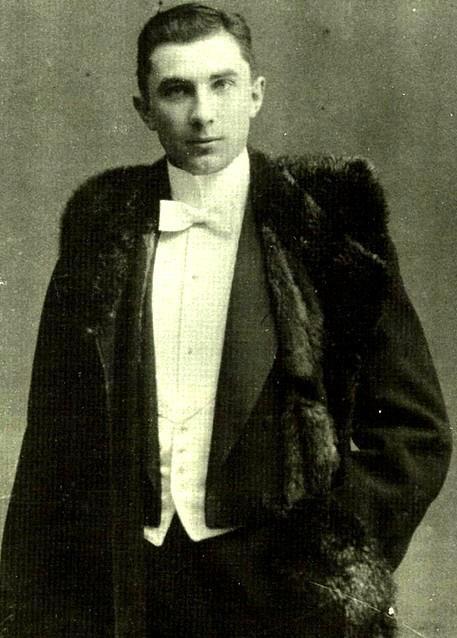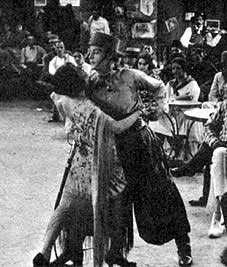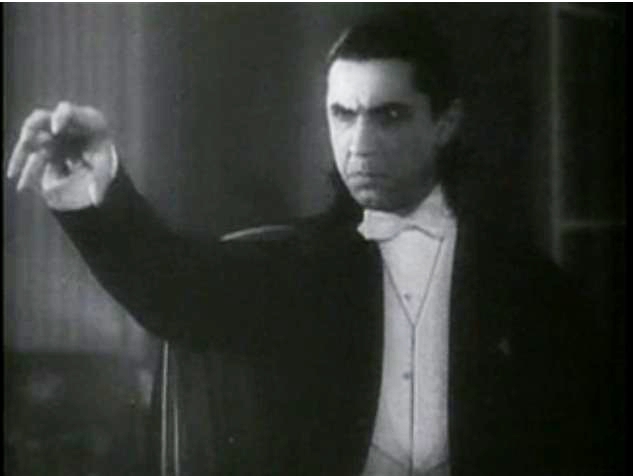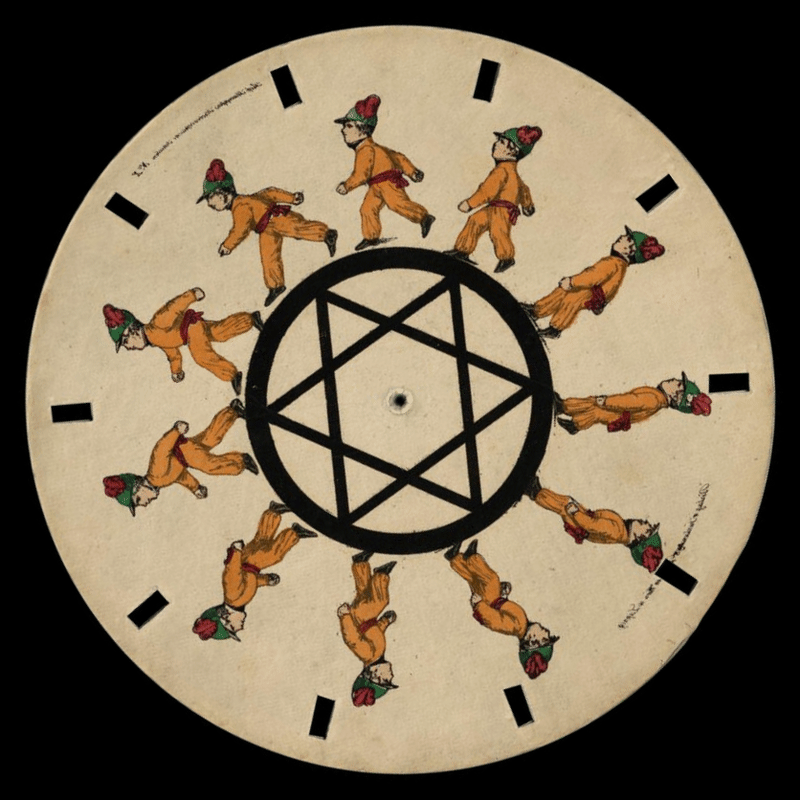|
Masked Ball (other)
''Masked Ball'' () is a 1917 Hungarian film directed by Alfréd Deésy and featuring Béla Lugosi and Norbert Dan. The screenplay was written by Francesco Maria Piave, Eugène Scribe and Antonio Somma. It was based on the opera ''Un ballo in maschera'' by Giuseppe Verdi. Lugosi played Rene, a Secretary Governor, one of his earliest "red herring" roles. The film was first shown at the Urania Theater in Budapest on Oct. 21, 1917.Bela Lugosi: Dreams and Nightmares by Gary D. Rhodes, with Richard Sheffield, (2007) Collectables/Alpha Video Publishers, ISBN 0-9773798-1-7 (hardcover) Cast * Norbert Dán * Róbert Fiáth * Lajos Gellért (credited as Viktor Kurd) * Annie Góth as Amalia * Richard Kornai as Rendorfonok * Béla Lugosi as Rene * Gyula Feher as Osvals See also * Béla Lugosi filmography Bela Lugosi (1882–1956), best known for the original screen portrayal of Bram Stoker's Dracula in 1931, was in many movies during the course of his 39-year film career. He appeared in fi ... [...More Info...] [...Related Items...] OR: [Wikipedia] [Google] [Baidu] |
Alfréd Deésy
Alfréd Deésy (22 September 1877 – 18 July 1961) was a Hungarian film director, screenwriter and actor. He directed 77 films between 1915 and 1947. Deésy also appeared as an actor in 28 films between 1913 and 1960. Biography Deésy was born Alfréd Kämpf in Dés, Austria-Hungary (now Dej, Romania); his stage name means "from Dés," much as "Lugosi" means "from Lugos." At the turn of the twentieth century, Deésy was making his name as a prominent actor on the Hungarian stage. Deésy became interested in the potential of motion pictures early, and in 1911 became co-manager of the Apollo movie theater in Debrecen. The following year, Deésy began submitting scenarios to fledgling Hungarian film concerns, and in 1913 he made his debut as screen actor. His directorial career began with ''Csak semmi botrányt!'' (1915), produced by Star-film, a Hungarian film company over which Deésy ultimately took control and operated until 1919, when the Hungarian film industry was natio ... [...More Info...] [...Related Items...] OR: [Wikipedia] [Google] [Baidu] |
Béla Lugosi
Béla Ferenc Dezső Blaskó (; October 20, 1882 – August 16, 1956), known professionally as Bela Lugosi (; ), was a Hungarian and American actor best remembered for portraying Count Dracula in the 1931 horror classic ''Dracula'', Ygor in ''Son of Frankenstein'' (1939) and his roles in many other horror films from 1931 through 1956. Lugosi began acting on the Hungarian stage in 1902. After playing in 172 different productions in his native Hungary, Lugosi moved on to appearing in Hungarian silent films in 1917. He had to suddenly emigrate to Germany after the failed Hungarian Communist Revolution of 1919 because of his former socialist activities (organizing a stage actors' union), leaving his first wife in the process. He acted in several films in Weimar Germany, before arriving in New Orleans as a seaman on a merchant ship, then making his way north to New York City and Ellis Island. In 1927, he starred as Count Dracula in a Broadway adaptation of Bram Stoker's novel, movi ... [...More Info...] [...Related Items...] OR: [Wikipedia] [Google] [Baidu] |
Silent Film
A silent film is a film with no synchronized Sound recording and reproduction, recorded sound (or more generally, no audible dialogue). Though silent films convey narrative and emotion visually, various plot elements (such as a setting or era) or key lines of dialogue may, when necessary, be conveyed by the use of intertitle, title cards. The term "silent film" is something of a misnomer, as these films were almost always accompanied by live sounds. During the silent era that existed from the mid-1890s to the late 1920s, a piano, pianist, theatre organ, theater organist—or even, in large cities, a small orchestra—would often play music to accompany the films. Pianists and organists would play either from sheet music, or musical improvisation, improvisation. Sometimes a person would even narrate the inter-title cards for the audience. Though at the time the technology to synchronize sound with the film did not exist, music was seen as an essential part of the viewing experie ... [...More Info...] [...Related Items...] OR: [Wikipedia] [Google] [Baidu] |
Un Ballo In Maschera
''Un ballo in maschera'' ''(A Masked Ball)'' is an 1859 opera in three acts by Giuseppe Verdi. The text, by Antonio Somma, was based on Eugène Scribe's libretto for Daniel Auber's 1833 five act opera, '' Gustave III, ou Le bal masqué''. The plot concerns the assassination in 1792 of King Gustav III of Sweden who was shot, as the result of a political conspiracy, while attending a masked ball, dying of his wounds thirteen days later. It was to take over two years between the commission from Naples, planned for a production there, and its premiere performance at the Teatro Apollo in Rome on 17 February 1859. In becoming the ''Un ballo in maschera'' which we know today, Verdi's opera (and his libretto) underwent a significant series of transformations and title changes, caused by a combination of censorship regulations in both Naples and Rome, as well as by the political situation in France in January 1858. Based on the Scribe libretto and begun as ''Gustavo III'' set in Sto ... [...More Info...] [...Related Items...] OR: [Wikipedia] [Google] [Baidu] |
Béla Lugosi Filmography
Bela Lugosi (1882–1956), best known for the original screen portrayal of Bram Stoker's Dracula in 1931, was in many movies during the course of his 39-year film career. He appeared in films made in his native Hungary, Germany and New York before re-locating to Hollywood in 1928. Films are listed in order of release. (see Bela Lugosi for his biography.) 1910s This is a list of confirmed film roles Lugosi has performed in. Some films from other filmography sources have not been included here such as Star Film's ''Casanova'' (1918), ''Lulu'' (1918) and ''Lili'' (1917), all of which had announced that Lugosi would appear in them, but Lugosi was apparently dropped from the cast before production began. 1920s 1930s 1940s 1950s Television/ Radio *''Intimate Interviews'' (1932) interviewed on radio by Dorothy West *'' Hollywood on Parade No. A-8'' (1933) a 10-minute comedy skit/ short subject with Bonnie Poe as Betty Boop *''Universal's Black Cat Contest'' (March 1934) this ... [...More Info...] [...Related Items...] OR: [Wikipedia] [Google] [Baidu] |
1918 Films
The year 1918 in film involved some significant events. __TOC__ Events *January 27 – Tarzan makes his film debut in '' Tarzan of the Apes''. *March 10 – Warner Bros. release their first produced picture, '' My Four Years in Germany''. *July – The animated '' The Sinking of the Lusitania'' is one of the first examples of animation being used for something other than comedy. *Following litigation for anti-trust activities, the Motion Picture Patents Company disbands. * Louis B. Mayer arrives in Los Angeles and forms Louis B. Mayer Pictures Corporation. *28 mm safety standard film, designed by Alexander Victor, becomes one of the earliest film formats to use "safety film" bases in order to safeguard the amateur market against nitrate fires. Top-grossing films (U.S.) Notable films released in 1918 Argentina *'' Buenos Aires tenebroso'', directed by Juan Glize *'' En un día de gloria'', directed by Mario Gallo and Alberto Traversa *'' La garra porteña'', dire ... [...More Info...] [...Related Items...] OR: [Wikipedia] [Google] [Baidu] |
Hungarian Black-and-white Films
Hungarian may refer to: * Hungary, a country in Central Europe * Kingdom of Hungary, state of Hungary, existing between 1000 and 1946 * Hungarians, ethnic groups in Hungary * Hungarian algorithm, a polynomial time algorithm for solving the assignment problem * Hungarian language, a Finno-Ugric language spoken in Hungary and all neighbouring countries * Hungarian notation, a naming convention in computer programming * Hungarian cuisine Hungarian or Magyar cuisine is the cuisine characteristic of the nation of Hungary and its primary ethnic group, the Magyars. Traditional Hungarian dishes are primarily based on meats, seasonal vegetables, fruits, bread, and dairy products. ..., the cuisine of Hungary and the Hungarians See also * * {{disambiguation Language and nationality disambiguation pages ... [...More Info...] [...Related Items...] OR: [Wikipedia] [Google] [Baidu] |
Hungarian Silent Films
Hungarian may refer to: * Hungary, a country in Central Europe * Kingdom of Hungary, state of Hungary, existing between 1000 and 1946 * Hungarians, ethnic groups in Hungary * Hungarian algorithm, a polynomial time algorithm for solving the assignment problem * Hungarian language, a Finno-Ugric language spoken in Hungary and all neighbouring countries * Hungarian notation, a naming convention in computer programming * Hungarian cuisine Hungarian or Magyar cuisine is the cuisine characteristic of the nation of Hungary and its primary ethnic group, the Magyars. Traditional Hungarian dishes are primarily based on meats, seasonal vegetables, fruits, bread, and dairy products. ..., the cuisine of Hungary and the Hungarians See also * * {{disambiguation Language and nationality disambiguation pages ... [...More Info...] [...Related Items...] OR: [Wikipedia] [Google] [Baidu] |
Films Directed By Alfréd Deésy
A film also called a movie, motion picture, moving picture, picture, photoplay or (slang) flick is a work of visual art that simulates experiences and otherwise communicates ideas, stories, perceptions, feelings, beauty, or atmosphere through the use of moving images. These images are generally accompanied by sound and, more rarely, other sensory stimulations. The word "cinema", short for cinematography, is often used to refer to filmmaking and the film industry, and to the art form that is the result of it. Recording and transmission of film The moving images of a film are created by photographing actual scenes with a motion-picture camera, by photographing drawings or miniature models using traditional animation techniques, by means of CGI and computer animation, or by a combination of some or all of these techniques, and other visual effects. Before the introduction of digital production, series of still images were recorded on a strip of chemically sensitiz ... [...More Info...] [...Related Items...] OR: [Wikipedia] [Google] [Baidu] |
Films Based On Works By Eugène Scribe
A film also called a movie, motion picture, moving picture, picture, photoplay or (slang) flick is a work of visual art that simulates experiences and otherwise communicates ideas, stories, perceptions, feelings, beauty, or atmosphere through the use of moving images. These images are generally accompanied by sound and, more rarely, other sensory stimulations. The word "cinema", short for cinematography, is often used to refer to filmmaking and the film industry, and to the art form that is the result of it. Recording and transmission of film The moving images of a film are created by photographing actual scenes with a motion-picture camera, by photographing drawings or miniature models using traditional animation techniques, by means of CGI and computer animation, or by a combination of some or all of these techniques, and other visual effects. Before the introduction of digital production, series of still images were recorded on a strip of chemically sens ... [...More Info...] [...Related Items...] OR: [Wikipedia] [Google] [Baidu] |





